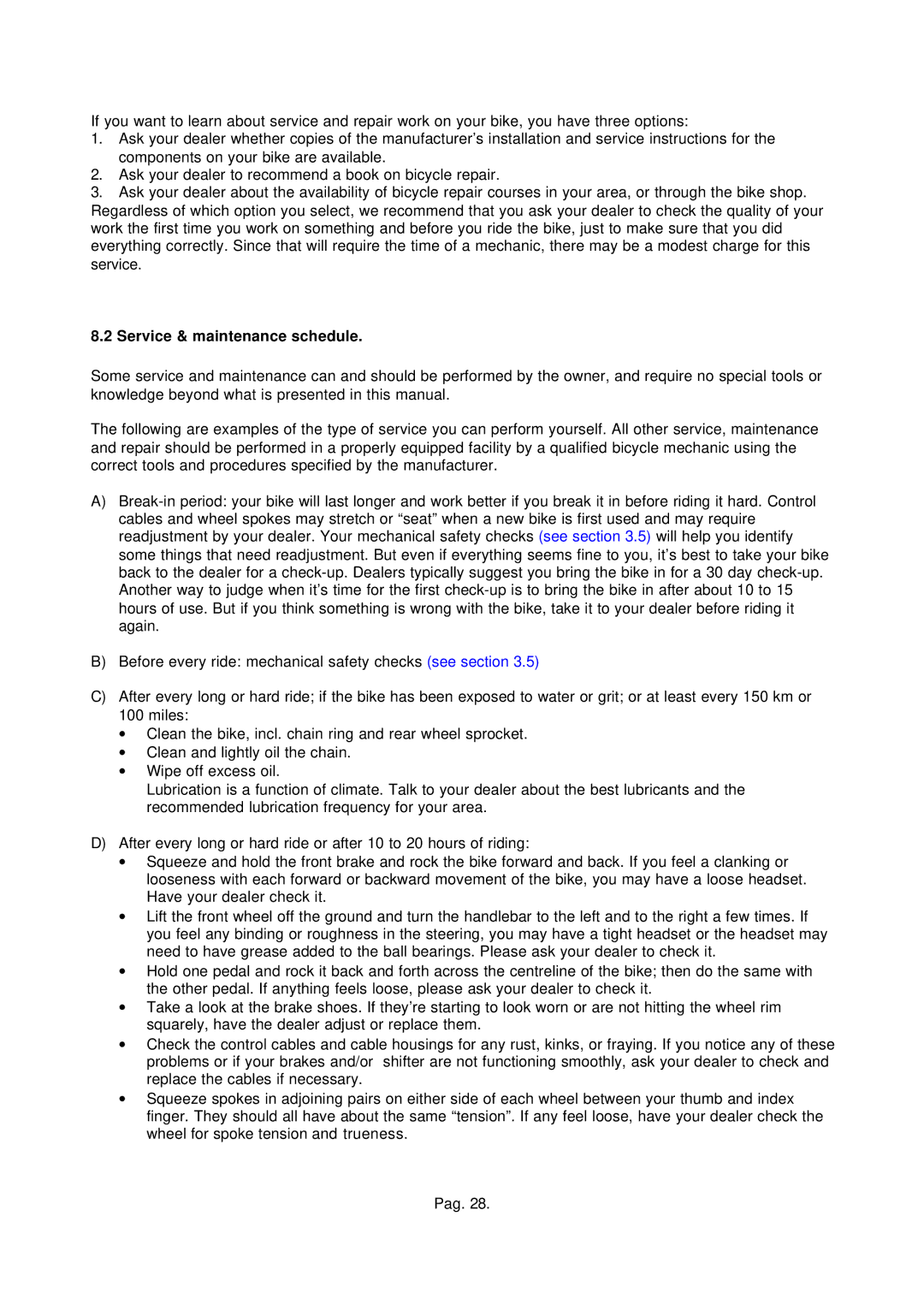If you want to learn about service and repair work on your bike, you have three options:
1.Ask your dealer whether copies of the manufacturer’s installation and service instructions for the components on your bike are available.
2.Ask your dealer to recommend a book on bicycle repair.
3.Ask your dealer about the availability of bicycle repair courses in your area, or through the bike shop. Regardless of which option you select, we recommend that you ask your dealer to check the quality of your work the first time you work on something and before you ride the bike, just to make sure that you did everything correctly. Since that will require the time of a mechanic, there may be a modest charge for this service.
8.2 Service & maintenance schedule.
Some service and maintenance can and should be performed by the owner, and require no special tools or knowledge beyond what is presented in this manual.
The following are examples of the type of service you can perform yourself. All other service, maintenance and repair should be performed in a properly equipped facility by a qualified bicycle mechanic using the correct tools and procedures specified by the manufacturer.
A)
B)Before every ride: mechanical safety checks (see section 3.5)
C)After every long or hard ride; if the bike has been exposed to water or grit; or at least every 150 km or
100 miles:
∙Clean the bike, incl. chain ring and rear wheel sprocket.
∙Clean and lightly oil the chain.
∙Wipe off excess oil.
Lubrication is a function of climate. Talk to your dealer about the best lubricants and the recommended lubrication frequency for your area.
D)After every long or hard ride or after 10 to 20 hours of riding:
∙Squeeze and hold the front brake and rock the bike forward and back. If you feel a clanking or looseness with each forward or backward movement of the bike, you may have a loose headset. Have your dealer check it.
∙Lift the front wheel off the ground and turn the handlebar to the left and to the right a few times. If you feel any binding or roughness in the steering, you may have a tight headset or the headset may need to have grease added to the ball bearings. Please ask your dealer to check it.
∙Hold one pedal and rock it back and forth across the centreline of the bike; then do the same with the other pedal. If anything feels loose, please ask your dealer to check it.
∙Take a look at the brake shoes. If they’re starting to look worn or are not hitting the wheel rim squarely, have the dealer adjust or replace them.
∙Check the control cables and cable housings for any rust, kinks, or fraying. If you notice any of these problems or if your brakes and/or shifter are not functioning smoothly, ask your dealer to check and replace the cables if necessary.
∙Squeeze spokes in adjoining pairs on either side of each wheel between your thumb and index finger. They should all have about the same “tension”. If any feel loose, have your dealer check the wheel for spoke tension and trueness.
Pag. 28.
